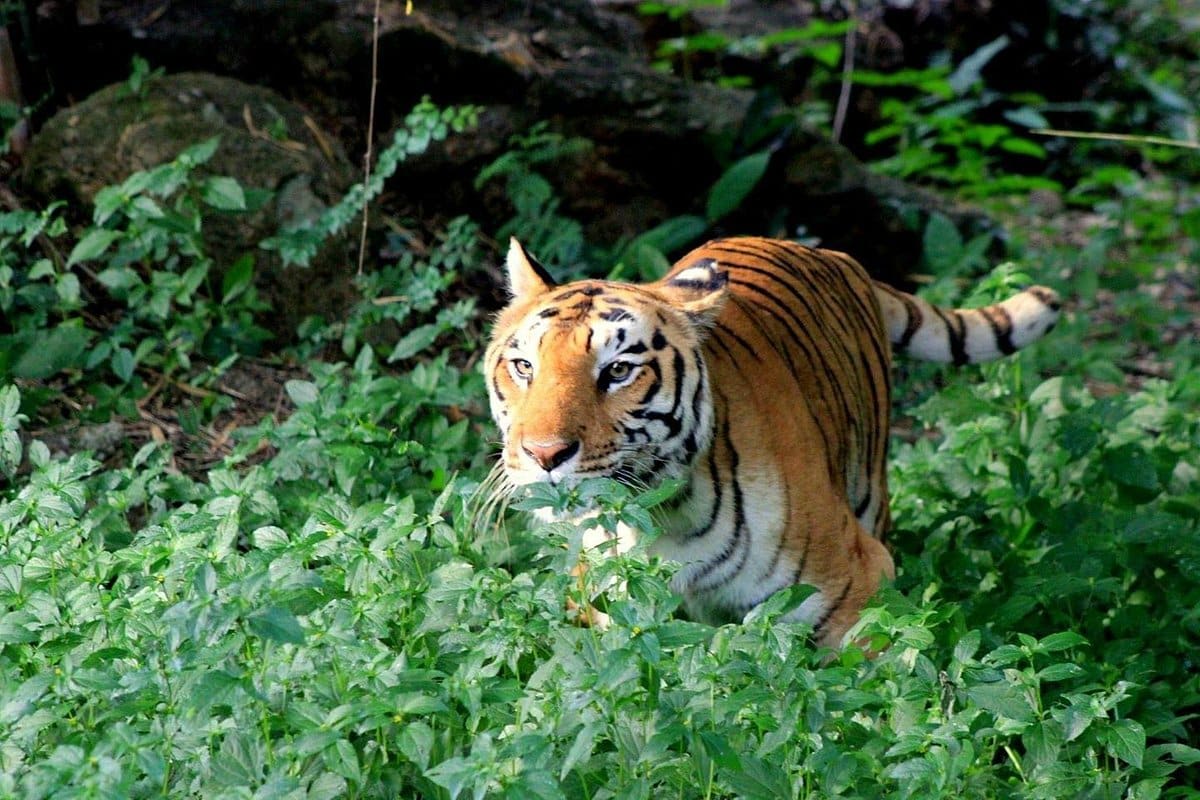About Bannerghatta National Park
- Location: It is located near Bangalore, Karnataka, in the hills of the Anekal range.
- Founded in 1971, the park was given the status of a national park in 1974.
- In 2002, a portion of the park became a biological reserve, the Bannerghatta Biological Park. It is the first biological park in India to have a fenced, forested elephant sanctuary.
- In 2006, India’s first butterfly enclosure was inaugurated at the park.
- River: Suvarnamukhi stream, the main source of water for the animals of the park, runs through the centre of the park.
- It also acts as an important corridor for the elephants migrating from the Eastern Ghats to the Western Ghats
- Vegetation: There are three types of vegetation that can be found: Dry Deciduous Scrub Forests, Southern Tropical Dry Deciduous Forests and Southern Tropical Moist Mixed Forests.
- Flora: Include Narcissus latifolia, Schleichera oleosa, Sandalwood, Neem, Tamarind, Bamboo, Eucalyptus etc.
- Fauna: Prime habitat for several species, including the endangered Asian Elephant, Indian gaur, Tiger, Sambar deer, Spotted deer, Leopard, Wild dog, Wild pig, Sloth bear, Common mongoose, Pangolin, Slender loris, Black-naped hare, etc.
Q1) What is an eco-sensitive zone (ESZ)?
An eco-sensitive zone (ESZ) is an area that is identified and demarcated around protected areas such as national parks, wildlife sanctuaries, and biosphere reserves, to minimize the impact of developmental activities on the ecosystem.
Source: Bannerghatta National Park encroachment: Supreme Court committee seeks Karnataka govt’s response
Last updated on June, 2025
→ UPSC Notification 2025 was released on 22nd January 2025.
→ UPSC Prelims Result 2025 is out now for the CSE held on 25 May 2025.
→ UPSC Prelims Question Paper 2025 and Unofficial Prelims Answer Key 2025 are available now.
→ UPSC Calendar 2026 is released on 15th May, 2025.
→ The UPSC Vacancy 2025 were released 1129, out of which 979 were for UPSC CSE and remaining 150 are for UPSC IFoS.
→ UPSC Mains 2025 will be conducted on 22nd August 2025.
→ UPSC Prelims 2026 will be conducted on 24th May, 2026 & UPSC Mains 2026 will be conducted on 21st August 2026.
→ The UPSC Selection Process is of 3 stages-Prelims, Mains and Interview.
→ UPSC Result 2024 is released with latest UPSC Marksheet 2024. Check Now!
→ UPSC Toppers List 2024 is released now. Shakti Dubey is UPSC AIR 1 2024 Topper.
→ Also check Best IAS Coaching in Delhi






















